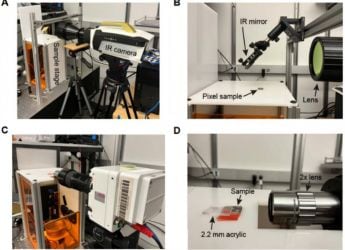- Home
- Science
- Science News
- AI Breakthrough Decodes Ancient Manuscripts: Roman Scrolls & Cuneiform Texts Revealed
AI Breakthrough Decodes Ancient Manuscripts: Roman Scrolls & Cuneiform Texts Revealed
AI breakthroughs are unlocking hidden texts, decoding ancient writings like Roman scrolls and cuneiform

Photo Credit: Pixabay/ WikiImages
AI is being used in South Korea to translate Joseon dynasty records written in Hanja
The use of artificial intelligence (AI) is transforming the study of ancient manuscripts, unlocking texts that have remained unreadable for centuries. From deciphering burnt Roman scrolls to analysing damaged cuneiform tablets, AI-driven tools are revealing new information about the ancient world. This advancement allows researchers to examine vast archives, identify previously unknown writings, and reconstruct missing text with unprecedented accuracy. Scholars are now equipped with more data than ever before, opening up opportunities to answer historical questions that were once out of reach.
Breakthrough in Herculaneum Scroll Deciphering
As reported by nature.com, AI has successfully revealed significant portions of Greek text. Computer scientists Brent Seales from the University of Kentucky and participants of the competition called Vesuvius Challenge, utilised advanced neural networks to detect ink patterns on the fragile scrolls. As reported by Nature.com, the February 2024 winning entry employed a TimeSformer model, revealing text attributed to an ancient Greek philosophical work. Federica Nicolardi, a papyrologist at the University of Naples, described the discovery as a "historic moment for the field."
Applications in Other Historical Archives
AI tools are also being applied to diverse historical collections. Researchers in South Korea are employing transformer-based networks to translate the extensive records of the Joseon dynasty, written in Hanja. This system has expedited translations of state records, offering insights into the political and cultural trends of the era. Similarly, initiatives such as the Fragmentarium project at Ludwig-Maximilians University are using neural networks to identify overlapping cuneiform fragments, uncovering lines from the Epic of Gilgamesh and a previously unknown hymn to Babylon.
Challenges and Future Prospects
Concerns regarding accuracy and accessibility remain as AI enables rapid decoding of large text corpora. Experts emphasise the need for interdisciplinary collaboration and open-source data to ensure transparency and replicability. Brent Seales has noted to nature.com that the success of AI in these applications underscores its role as a complement to human expertise, providing data that specialists can interpret and analyse. As AI continues to evolve, researchers anticipate breakthroughs in decoding lost languages and exploring underground libraries, potentially reshaping the understanding of ancient civilisations.
Get your daily dose of tech news, reviews, and insights, in under 80 characters on Gadgets 360 Turbo. Connect with fellow tech lovers on our Forum. Follow us on X, Facebook, WhatsApp, Threads and Google News for instant updates. Catch all the action on our YouTube channel.
Related Stories
- Samsung Galaxy Unpacked 2025
- ChatGPT
- Redmi Note 14 Pro+
- iPhone 16
- Apple Vision Pro
- Oneplus 12
- OnePlus Nord CE 3 Lite 5G
- iPhone 13
- Xiaomi 14 Pro
- Oppo Find N3
- Tecno Spark Go (2023)
- Realme V30
- Best Phones Under 25000
- Samsung Galaxy S24 Series
- Cryptocurrency
- iQoo 12
- Samsung Galaxy S24 Ultra
- Giottus
- Samsung Galaxy Z Flip 5
- Apple 'Scary Fast'
- Housefull 5
- GoPro Hero 12 Black Review
- Invincible Season 2
- JioGlass
- HD Ready TV
- Laptop Under 50000
- Smartwatch Under 10000
- Latest Mobile Phones
- Compare Phones
- Jolla Phone
- Realme P4x 5G
- OnePlus Ace 6T
- Nubia Flip 3
- Nubia Fold
- OPPO A6x 5G
- Samsung Galaxy Z TriFold
- Poco F8 Ultra
- Asus ProArt P16
- MacBook Pro 14-inch (M5, 2025)
- OnePlus Pad Go 2
- Poco Pad M1
- Just Corseca Skywatch Pro
- Honor Watch X5
- Acerpure Nitro Z Series 100-inch QLED TV
- Samsung 43 Inch LED Ultra HD (4K) Smart TV (UA43UE81AFULXL)
- Asus ROG Ally
- Nintendo Switch Lite
- Haier 1.6 Ton 5 Star Inverter Split AC (HSU19G-MZAID5BN-INV)
- Haier 1.6 Ton 5 Star Inverter Split AC (HSU19G-MZAIM5BN-INV)

















